Does B2B prospecting sound daunting to you? It doesn't have to be.
Whether you want to build lists from a LinkedIn search or use AI to boost your lead generation, these B2B sales prospecting techniques and tools will make it a walk in the park.
TL;DR
-
B2B sales prospecting involves finding and nurturing businesses that might become potential clients.
Here are 8 methods to do it right.
-
Find prospects that match your target audience using Sales Navigator's advanced search filters.
-
Monitor your competitors' activity to inform your own B2B prospecting efforts and also reach out to their existing customers and followers.
-
Make the most of artificial intelligence (AI) to get personalized insights into your potential buyers.
-
Use social selling techniques to engage with your audience online before you jump into a sales pitch.
-
Run cold email outreach to nurture your leads directly, using smart copywriting techniques to stand out.
-
If it fits with your buyer personas, consider using cold-calling workflows to have a direct conversation.
-
Trial different sales cadences to see which sequence resonates the most with your potential leads.
-
Prioritize your inbound leads, as these people are already interested and motivated to convert.
Best practices for B2B prospecting: Only stick to relevant accounts, focus on building a personal brand, personalize your prospecting strategies, and automate the process where possible to save time.
-
B2B sales prospecting tools: PhantomBuster is ideal for sales representatives wanting to scale across multiple platforms, but Clay and Gong are also good options.
What is B2B prospecting?
B2B stands for "business-to-business." B2B prospecting refers to finding and connecting with businesses and organizations who might want to buy from you.
This involves researching, qualifying, and contacting prospective customers. Over time, you can build relationships that may lead to sales opportunities later on.
8 B2B prospecting methods for qualified prospect lists
Ready to build a strong pipeline of potential clients?
Here are eight proven methods to enhance your sales process, boost conversion rates, and ultimately drive your business growth (you're welcome 😉).
1. LinkedIn Sales Navigator search and list building
LinkedIn Sales Navigator is a B2B prospecting playground. Its platform taps into the largest professional network in the world, making it a treasure trove of potential customers.
And the main advantage of a Sales Navigator account is the advanced search filters.
With more data at your fingertips, narrowing down your qualified prospects (aka, the people who match your dream audience) is easier than ever.
You can also build lists to keep track of your potential prospects.
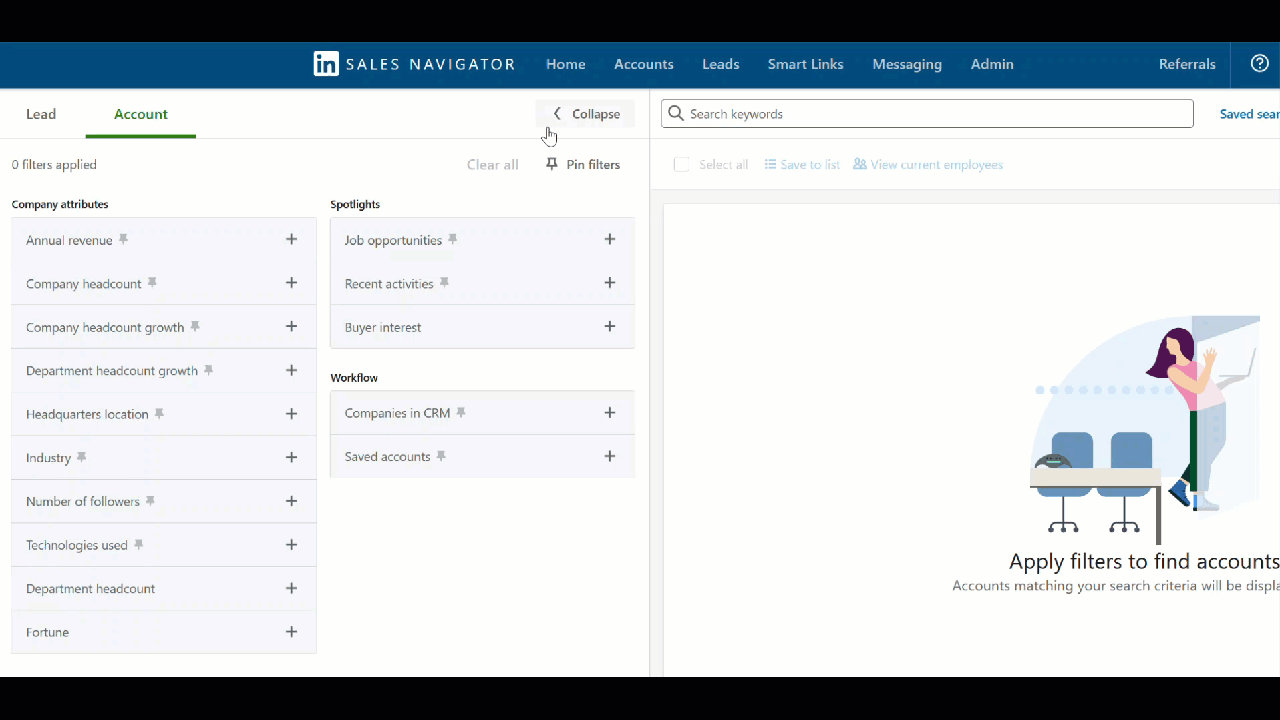
Plus, with the right B2B sales prospecting tools, you can scrape and export this prospect data.
For example, you could use PhantomBuster's Sales Navigator Search Export Phantom to:
-
Scrape a Sales Navigator search
-
Export the results into a spreadsheet
You can then plug the data straight into the next step of your sales process. Watch this video tutorial to learn how it works.
2. Understand and follow your competitors (and their followers)
As with any market research strategy, you need to know your competition inside-out. This will inform your own B2B prospecting methods and ensure that you can do it like them (but even better)!
By tracking your competitors' activity, you can:
-
Identify your main competitors: Identify the most active players in your field and adapt your sales and marketing strategy accordingly.
-
See which buyer personas they're targeting: Spot which target market they're having success with and use that information to inform your own cold outreach.
-
Follow their followers: These will likely be high-quality leads who already have an understanding of your industry.
-
Track their content marketing: By analyzing your competitors' brand voice, you can improve your own approach to creating messages that resonate.
For example, you could monitor your competitors on autopilot using PhantomBuster's LinkedIn Activity Extractor Phantom. This tool can review a list of LinkedIn profiles and export their posts, likes, and comments.

From the results, you can see which posts are generating the most engagement.
This could deliver insights into popular topics, messaging styles, industry events, and more—all useful information for your B2B prospecting process.
3. Use AI to understand your prospects better
B2B prospecting can involve processing a LOT of information.
Fortunately, artificial intelligence (AI) can help you break through the noise and get clear, data-driven insights about your target prospects.
For example, in a recent post, sales influencer Florin Tatulea highlighted how Sales Navigator users can now get AI-generated summaries of their target accounts.
This includes information such as their key personas, strategic priorities, and more, which is priceless for B2B prospecting.

You could also use sales prospecting AI prompts to suggest:
-
A sales pitch that could resonate with someone
-
Lead scores based on certain criteria
-
Potential pain points they might be experiencing
-
Which outreach channels could get the best response rates
-
The best tone of voice for certain leads
For instance, you can use PhantomBuster's AI LinkedIn Profile Enricher Phantom to generate lead scores between 0 and 4 for a list of LinkedIn profiles. Then use these lead scores to qualify leads and identify the most promising ones.
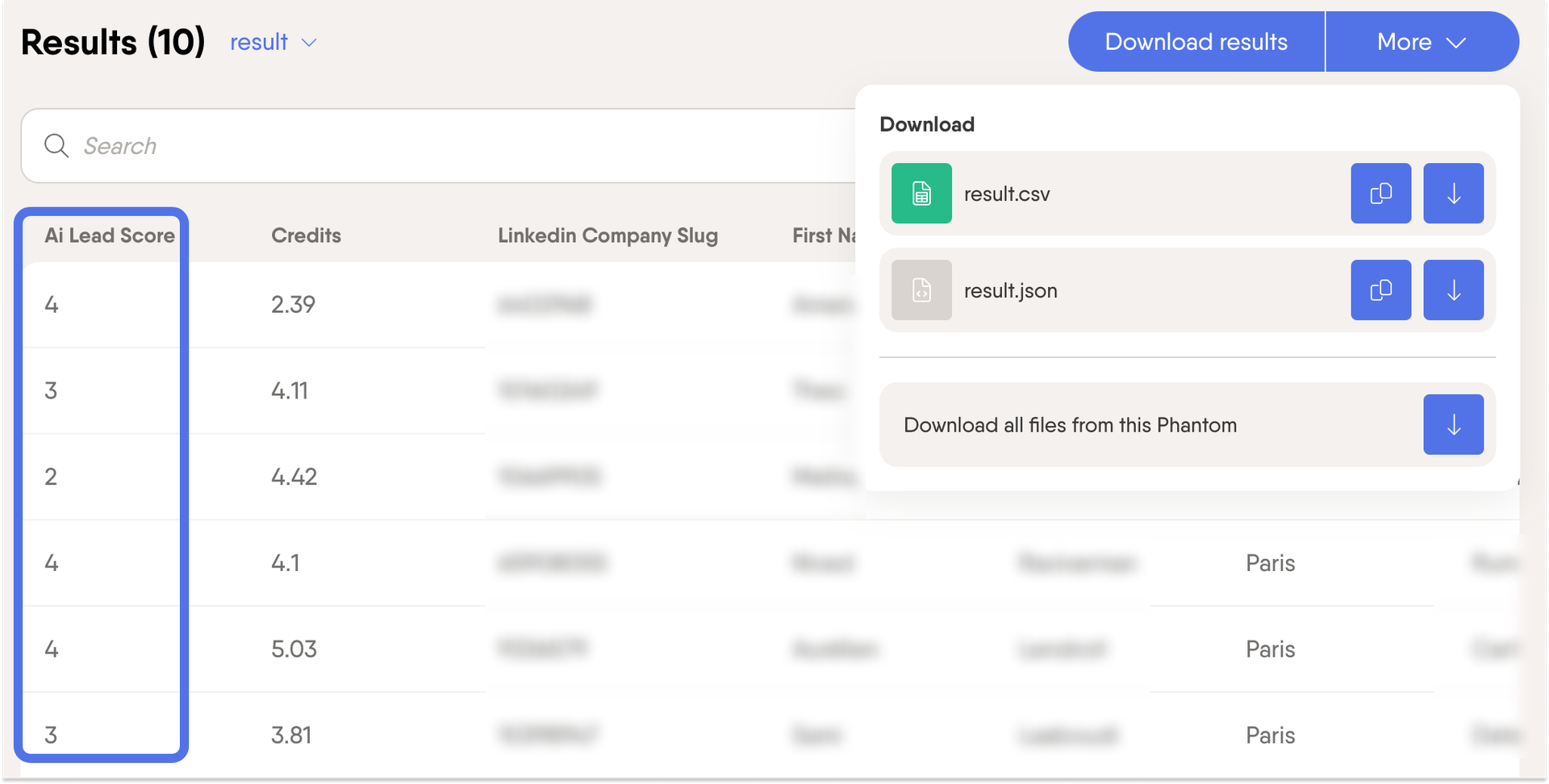
Here's another example of how you can use AI tools to identify tone of voice for potential leads. This data could inform and personalize any B2B prospecting messaging.

4. Use social selling to build relationships
Imagine if a stranger walked up to you and yelled, "Buy my stuff!"
You'd probably turn around and walk away, right?
You don't know the person, you don't understand what they're offering, and there's no emotional incentive to do what they say.
Takeaway: Humans are hardwired for relationships. And the same is true for sales prospecting. You're more likely to get people's attention if you focus on building a connection, first.
Social selling is all about building relationships with your audience on social media.

Instead of bombarding them with your pitch straight away, you can nurture them progressively and establish yourself as a trusted authority in your niche.
Then, when your new prospects are ready to convert, they'll know exactly who to ask.
When it comes to B2B prospecting, LinkedIn is generally the best platform to focus on for social selling. And it doesn't have to take hours.
There are plenty of LinkedIn automation tools that let you like, comment, and message on autopilot.
5. Set outbound email outreach campaigns
Cold emailing is a classic B2B prospecting technique—and with good reason.
It's the only sales prospecting channel that lets you reach someone directly in their inbox. It's also easy to measure success via response rates, and you can personalize each direct mail, too.
However, cold email copywriting is a fine art. It will take some trial and error to see what clicks the most with your ideal customer profile (ICP).
But generally, it's advisable to:
-
Have a catchy subject line
-
Keep it short and sweet to avoid losing their attention
-
Personalize the content for each lead
-
Avoid "sales-y" language and keep it simple
-
Feature one clear call to action (CTA)

But where do you get email addresses for your B2B sales prospecting?
Many sales professionals rely on a trusted email finder tool. For example, some sales reps look for emails from LinkedIn.

6. Use cold calling to find qualified leads
Cold calls are when you phone businesses who haven't expressed an interest in your service, yet.
Cold calling can be an effective sales prospecting technique because it allows for direct interaction with your leads. You can also quickly address any questions or concerns and get immediate feedback from the client.
Is cold calling right for me?
A cold call strategy might not match every buyer persona. For example, small business owners may be receptive to phone calls, as they're often the main decision-makers. However, senior executives won't be a good fit, due to tight schedules and restricted access.
And if you're looking for phone numbers, then the Data Scraping Crawler Phantom could be a useful sales tool.
You can input any website URL, and it will search for any available contact numbers for you.

In this example, we successfully extracted a US-based phone number for HubSpot within seconds.

7. Test different sales cadence flows
A sales cadence refers to the interactions a sales team has with a lead. These could include emails, phone calls, social media messages, and more.
Remember—what works for one group of prospects might not work for another. Factors such as industry, company size, and individual preferences can all influence how a prospect responds.
This means that for your B2B sales prospecting, you may need to trial several different sales cadences.
Here's an example.
|
Cadence A |
Cadence B |
|
|---|---|---|
|
Day 1 |
Send an introduction email |
Connect on LinkedIn and send a DM. |
|
Day 3 |
Follow up with a phone call |
Like and comment on their posts. |
|
Day 5 |
Share a relevant case study by email |
Send a follow-up DM to schedule a call |
|
Day 7 |
Check in by email with a special offer |
Give a limited-time discount via DM |
8. Leverage your inbound marketing leads
Inbound prospecting is when you connect with businesses that have already expressed an interest in working with you.
These are known as 'inbound leads.'
Generally, these potential customers will be easier to convert. This is because they'll already understand your brand, and they'll have an idea of what they want to achieve with you.
This instantly skips them ahead to the 'consideration' stage of the sales funnel.
Focusing your sales activities on these people is a smart move because they're already halfway there!
For example, you could share industry news and case studies with them via a LinkedIn messaging sequence and explain how your brand fits into the big picture.
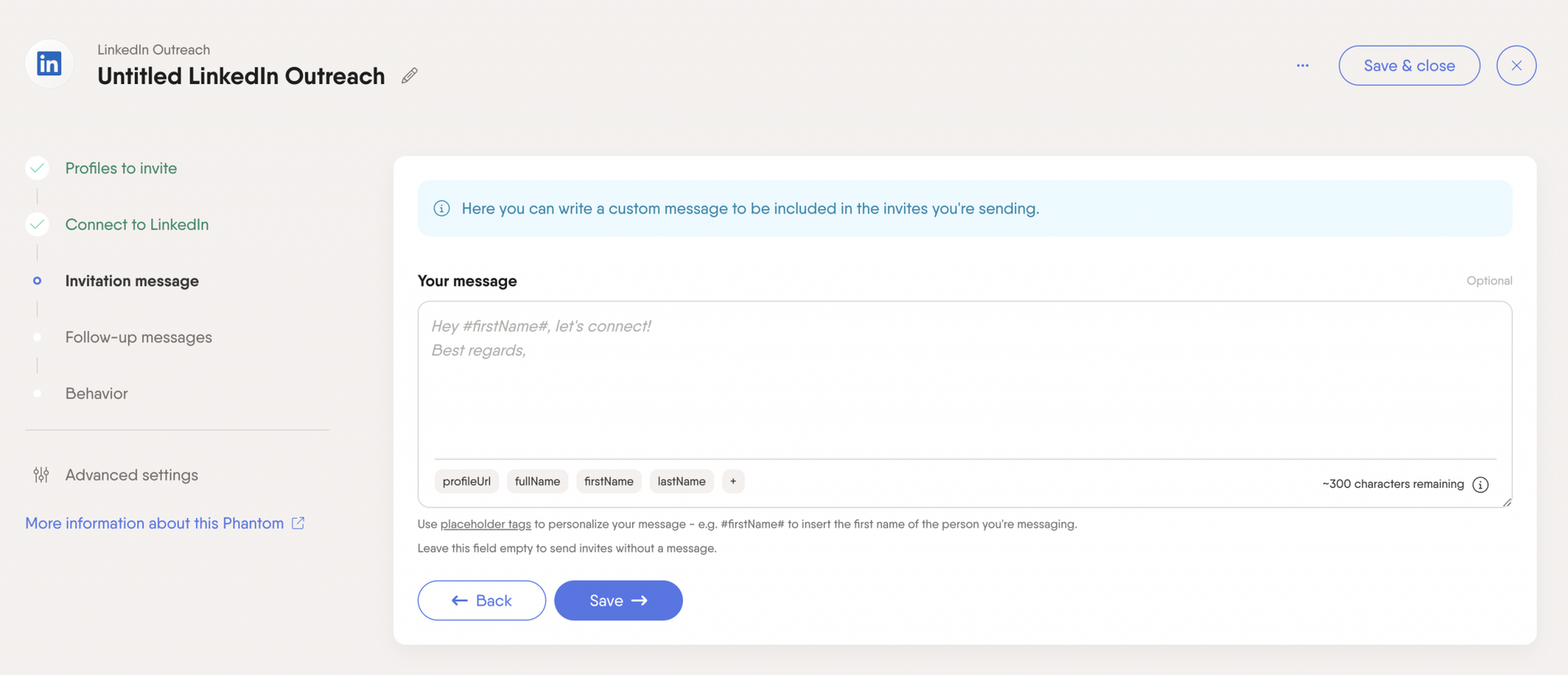
B2B sales prospecting best practices
If you want to identify and connect with high-quality leads, then these best practices will enhance your sales prospecting process from start to finish.
Target accounts that are relevant
Your prospecting strategies are wasted if you focus them on the wrong businesses.
Even if your main focus is outbound prospecting, this doesn't mean you should cast a wide net. Instead, use prospectingmethods that get you the best-qualified leads.
Quality is better than quantity!
For example, you could run a LinkedIn search with filters to match your ideal customer profile and then focus on those leads.
With the LinkedIn Search Export Phantom, you can copy a search URL and then export the resulting profiles for your sales cycle.

Build a personal brand to support your social selling efforts
A personal brand helps establish your credibility, showcase your expertise, and create a memorable impression on potential clients.
It allows prospects to see you as a trusted advisor rather than just another salesperson, making them more likely to engage with your content and respond to your outreach.
To enhance your personal brand and engage potential customers, remember to:
-
Identify what makes you unique and focus your content on that
-
Optimize your social media profiles
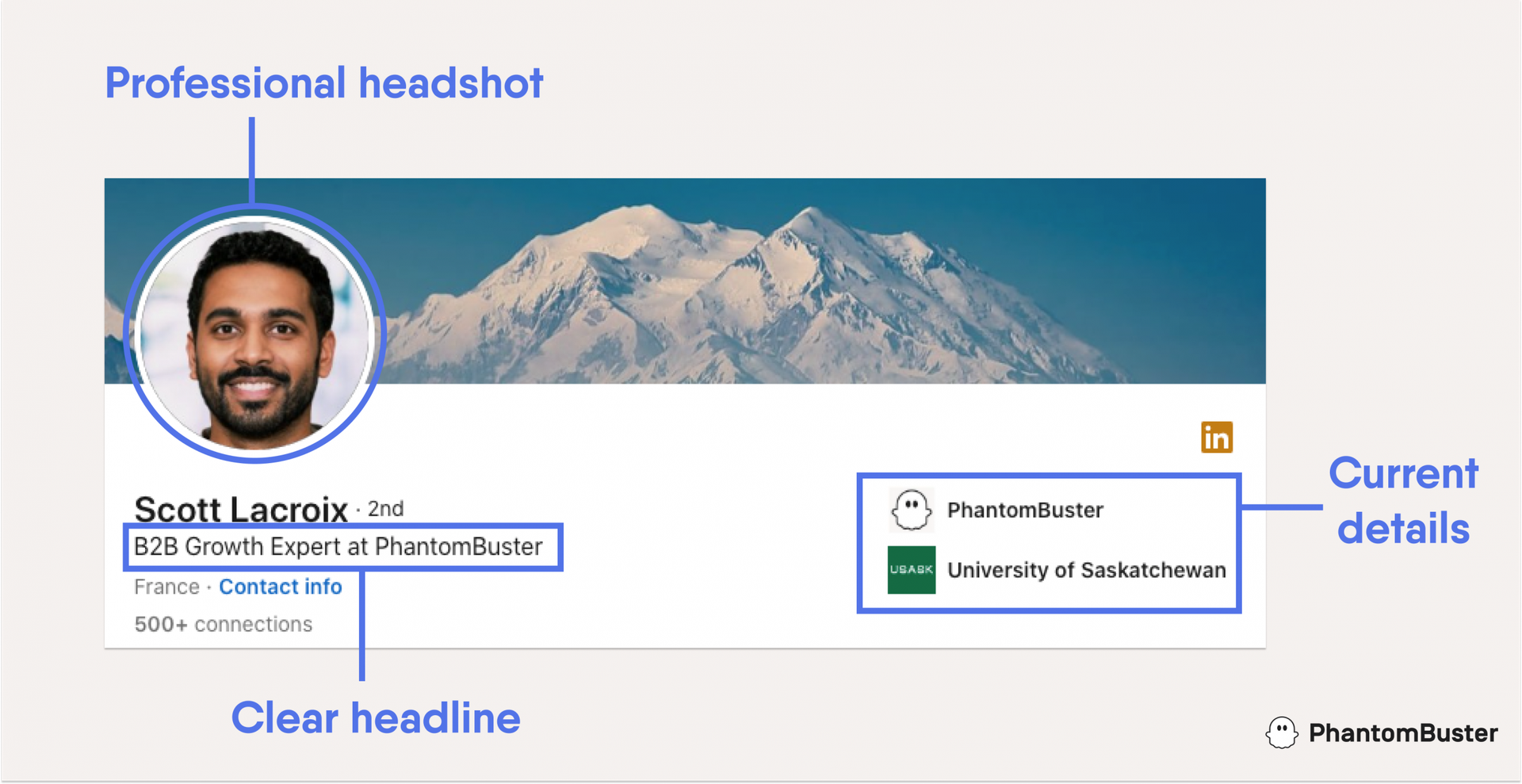
-
Share valuable, creative posts and insights
-
Post regularly to stay at the top of the newsfeed
-
Engage with your followers' posts, too

Personalize your messages to support your outreach efforts
By personalizing your messages, you're not only building a rapport, but you're also showing your prospects that you genuinely care.
For instance, you can address the recipient by name and reference details unique to their business. This shows that you've done your homework, and they'll be far more likely to engage with you.

Plus, with tools like the LinkedIn Message Sender Phantom, you can personalize your messages at scale using placeholder tags. So, you can still automate your outreach while staying authentic!

Automate parts of the sales process and scale your efforts
B2B prospecting strategies take time—which sales and marketing teams have in very short supply.
By adopting B2B prospecting automation tools, you can lighten the load and free up time to focus on more important parts of your strategy.
For example, PhantomBuster has a selection of 100+ automations known as "Phantoms" (single automations) and "Flows" (sequences).
These tools can run on autopilot across major platforms like LinkedIn, Sales Navigator, and Google Maps, gathering and enriching your lead lists for you.
As long as you focus on your target audience and make the most of personalization tags, you can still maintain your authenticity and unique voice while automatically scaling your outreach.
Best sales prospecting tools for sales development representatives
Now that you know the best practices and methods for your sales cycle, here are some of the best tools to bring them to life.
PhantomBuster
PhantomBuster is a lead generation automation software. Thanks to its functionality across different platforms, it's a great fit for sales teams wanting to prioritize multifaceted, scalable workflows.
PhantomBuster lets you:
-
Find leads: Add leads to your sales pipeline using search exports and data scraping.
-
Enrich them: Get to know them better with LinkedIn data, Sales Navigator insights, and more.
-
Connect with them: Boost your social selling with auto-engagement tools.
-
Keep your CRM up to date: Automatically update and Enrich your HubSpot data.
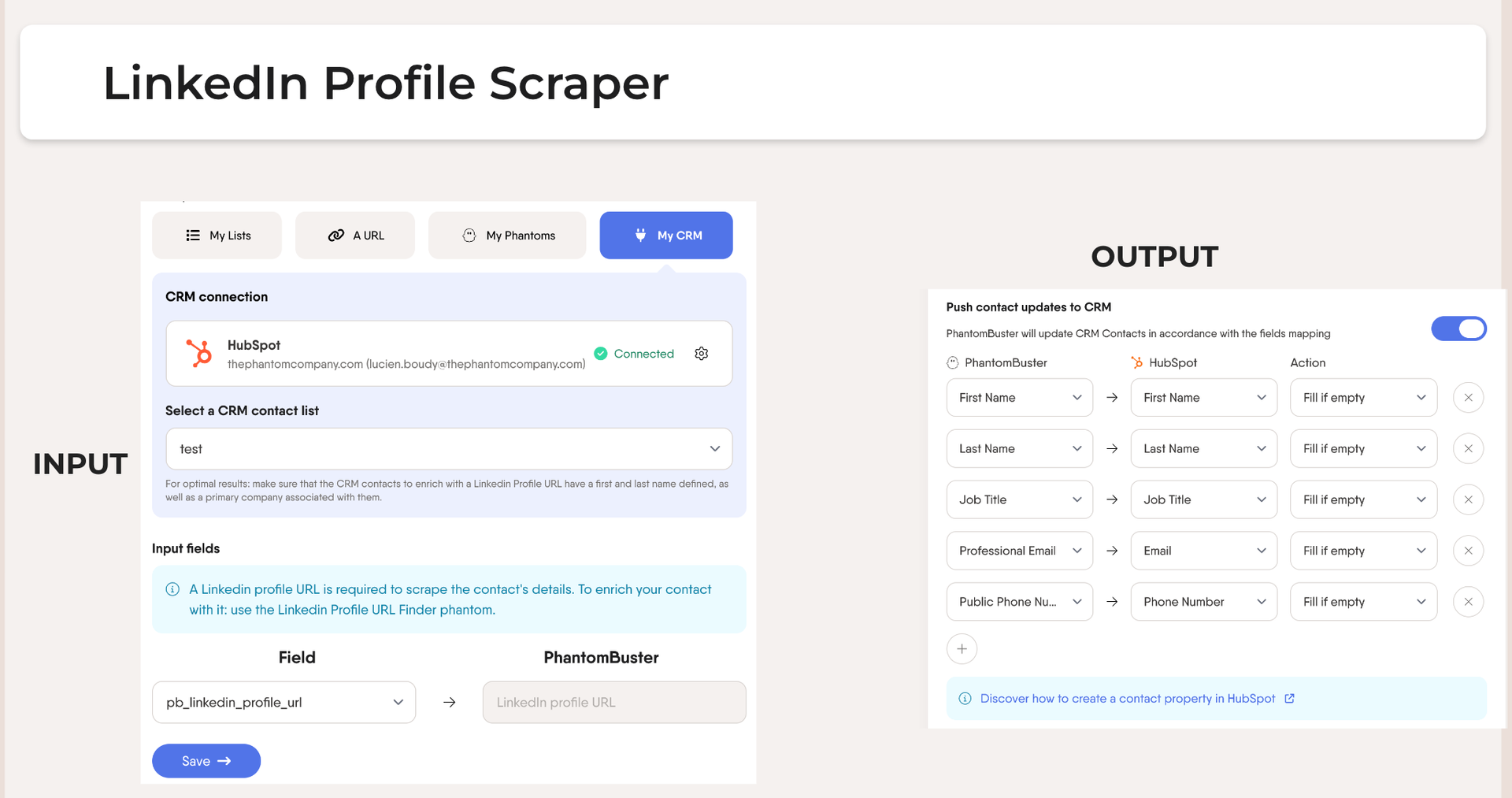
PhantomBuster pricing
After a 14-day free trial, PhantomBuster's pricing starts at $56 per month for an annual plan.
Clay
If your primary focus is data enrichment, then Clay could also be a great option. Clay lets you build your own lead lists from existing databases, including HubSpot, Google Maps, and Salesforce.
Clay lets you:
-
Build lead lists: Use different sources to find the right prospects.
-
Enrich them: Gather their contact details from different providers.
-
Personalize your outreach: Create AI-generated emails that resonate.
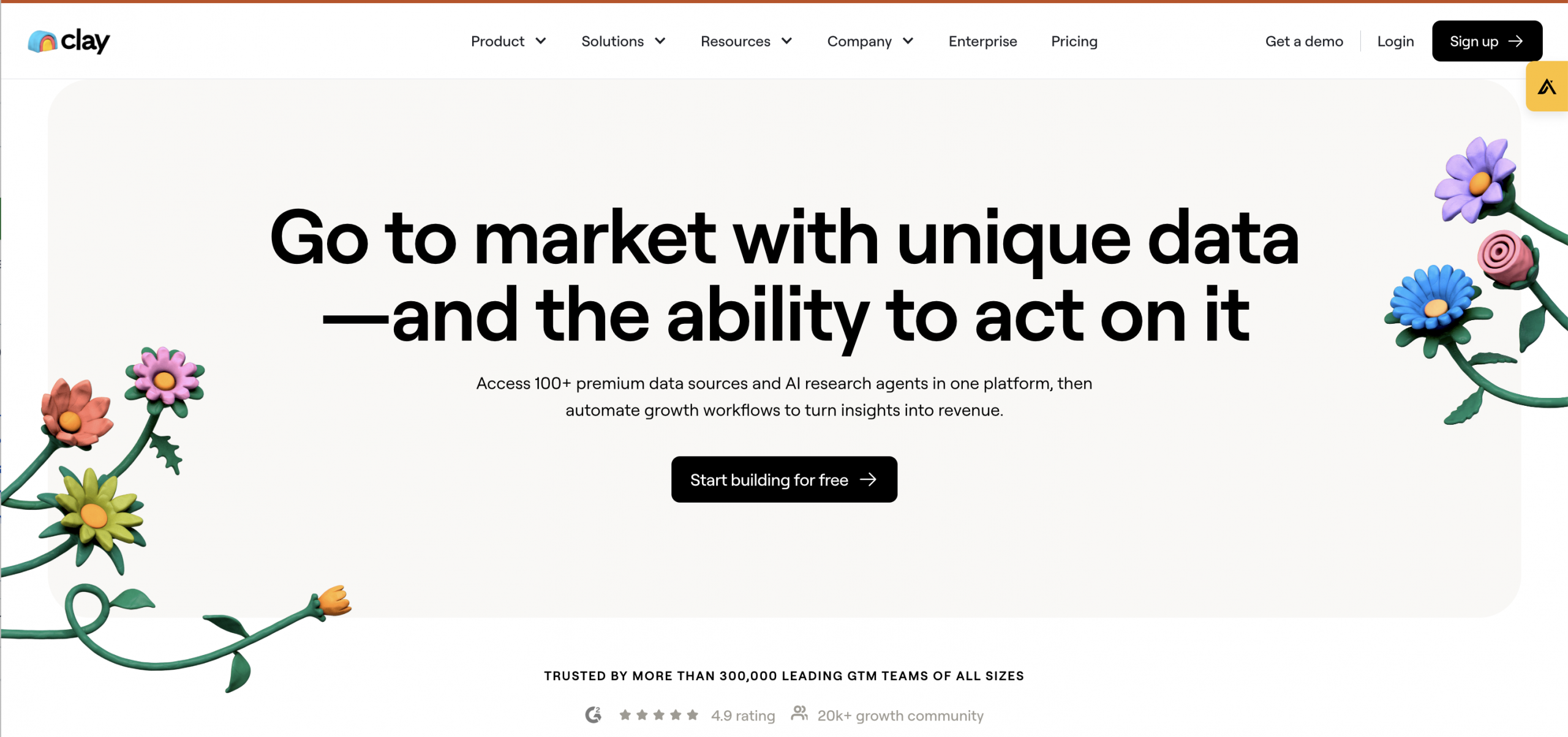
Clay pricing
After their free plan, Clay's pricing starts at $149 per month, although this can be reduced by 10% for an annual plan.
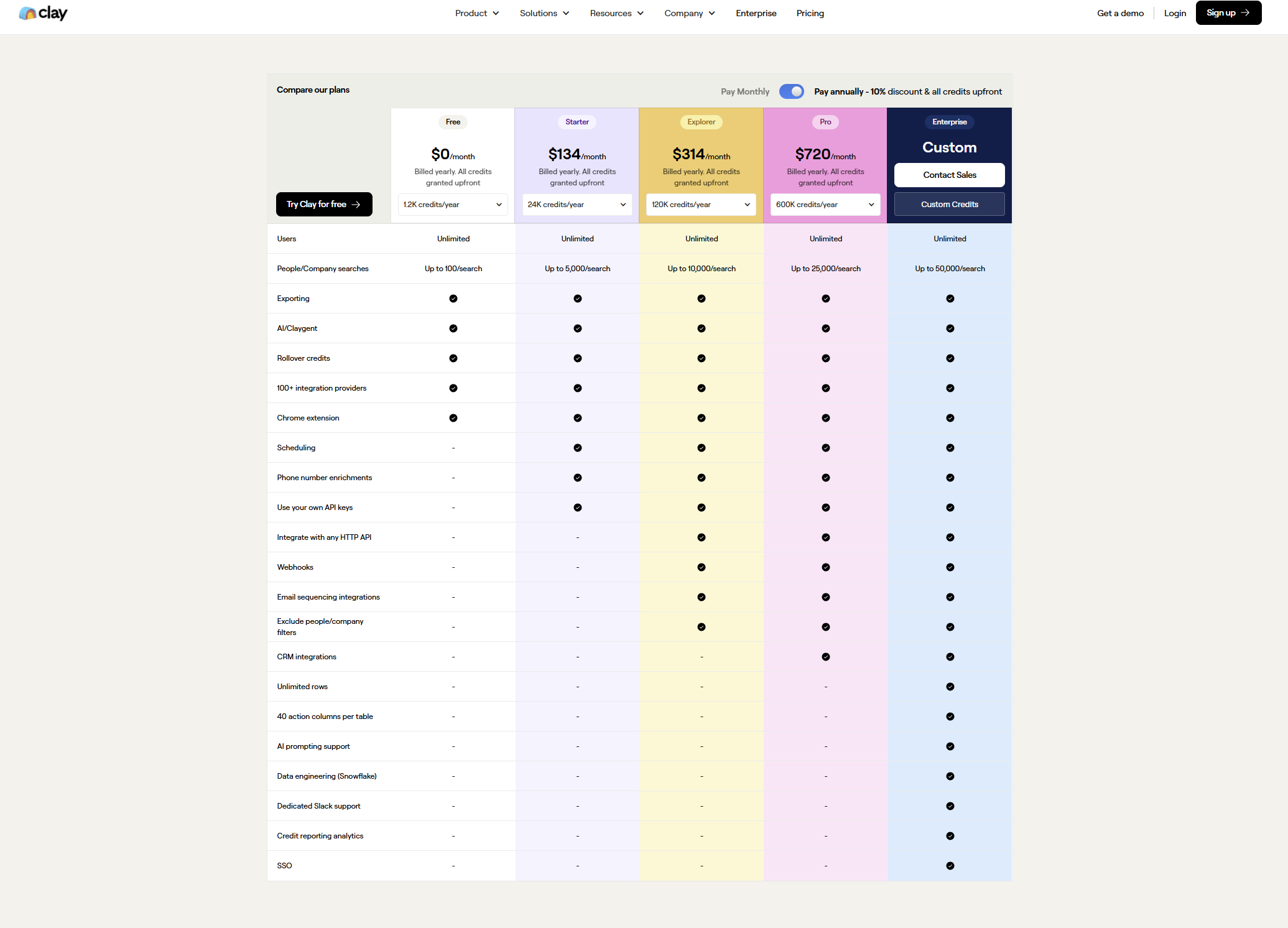
Gong
Gong is a sales intelligence platform that lets you analyze customer and team data. With personalized insights, you can optimize your B2B prospecting methods accordingly.
Gong lets you:
-
Track your sales pipeline: Identify risks early and make the most of win/loss data.
-
Coach your team: Use data to deliver personalized guidance to team members.
-
Forecast your revenue: Track and pinpoint any changes in your forecast.
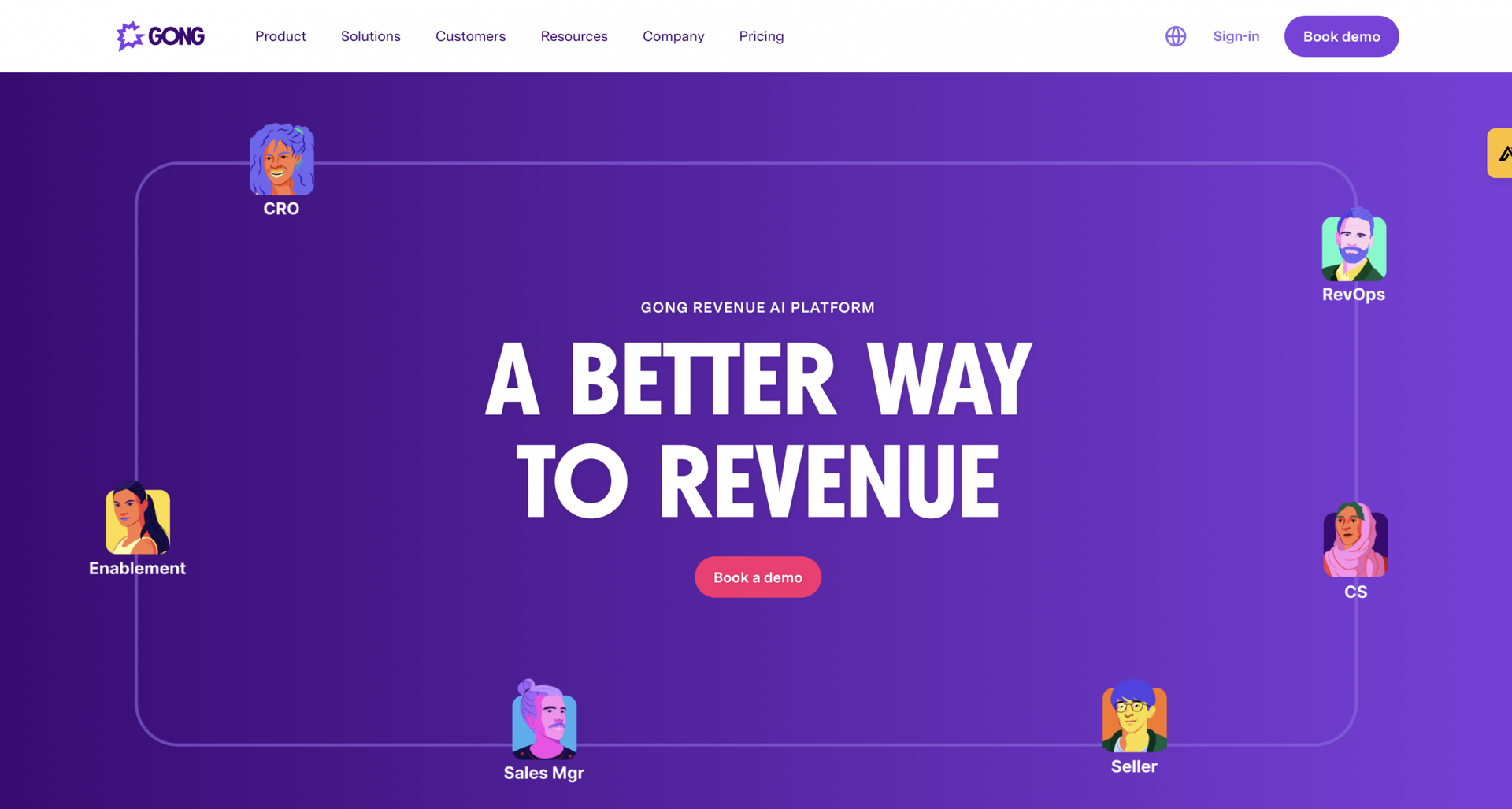
Gong pricing
Gong works via a custom pricing model, where you need to submit a survey and get in touch to receive a quote.
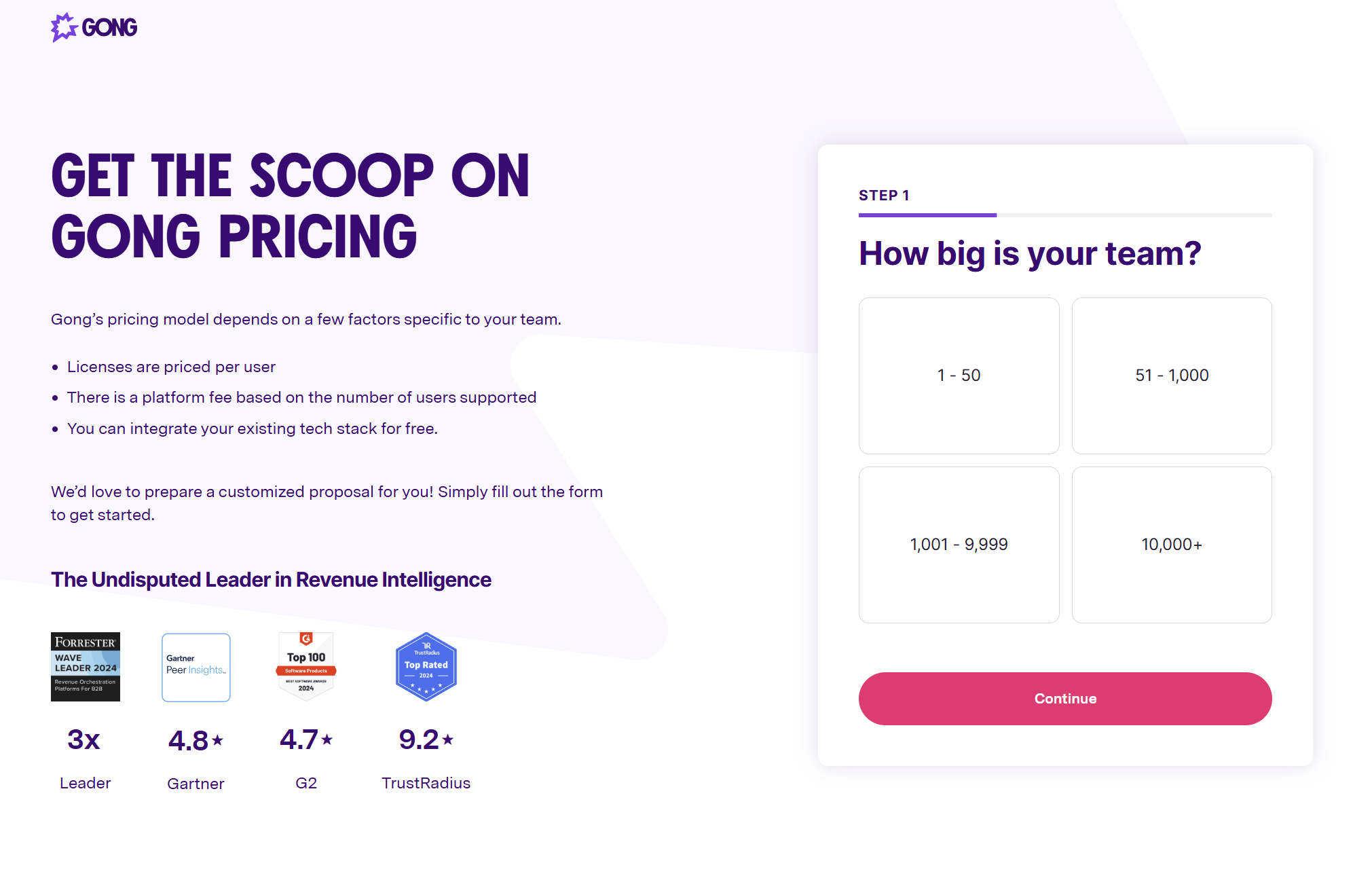
Conclusion
Ultimately, any B2B sales prospecting method requires authenticity and personalization. The more you connect with your leads, the more likely they are to convert.
Use tools like PhantomBuster to scale your sales organization, stick to the above best practices, and you'll be well on your way to B2B prospecting success.
